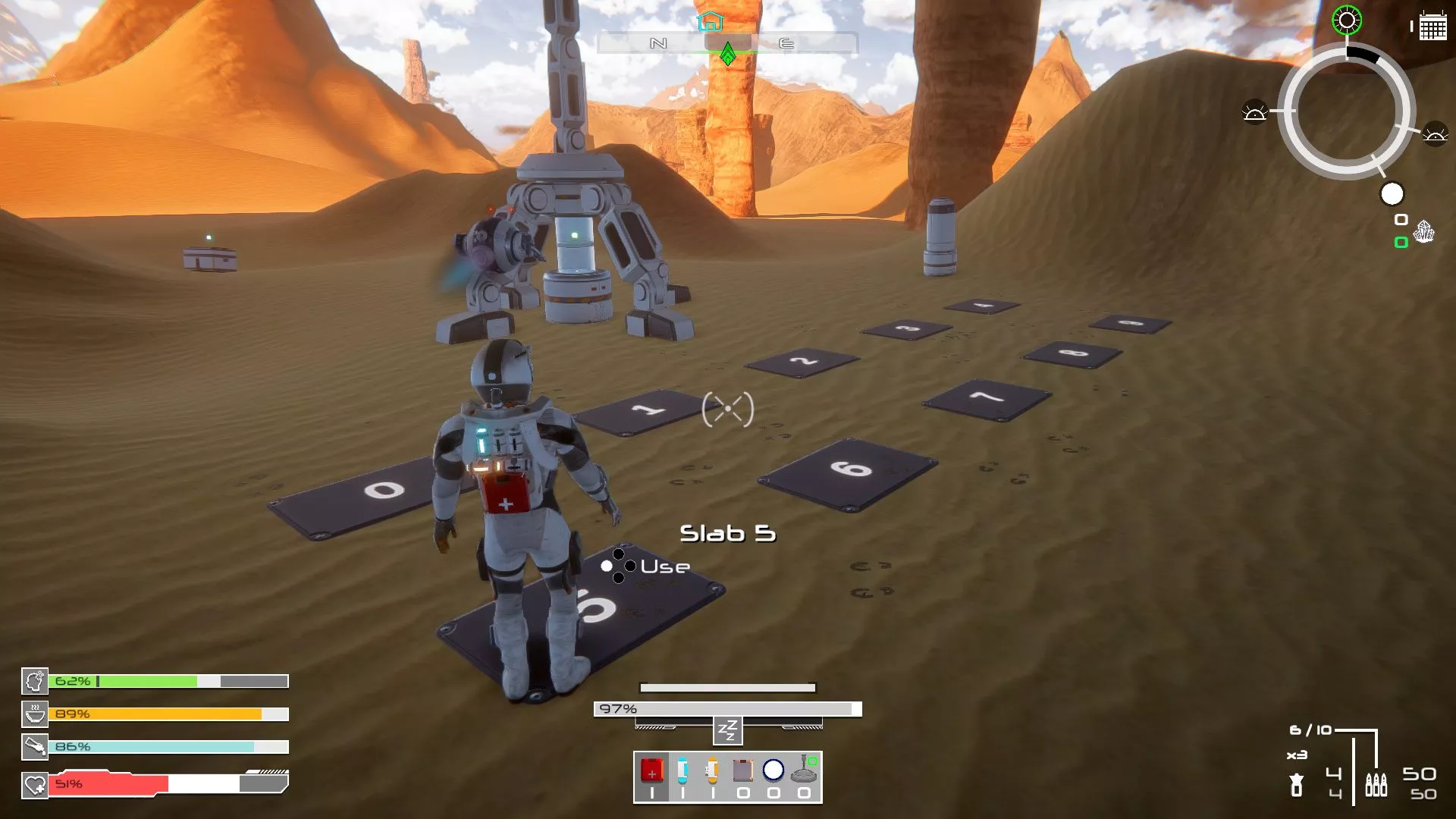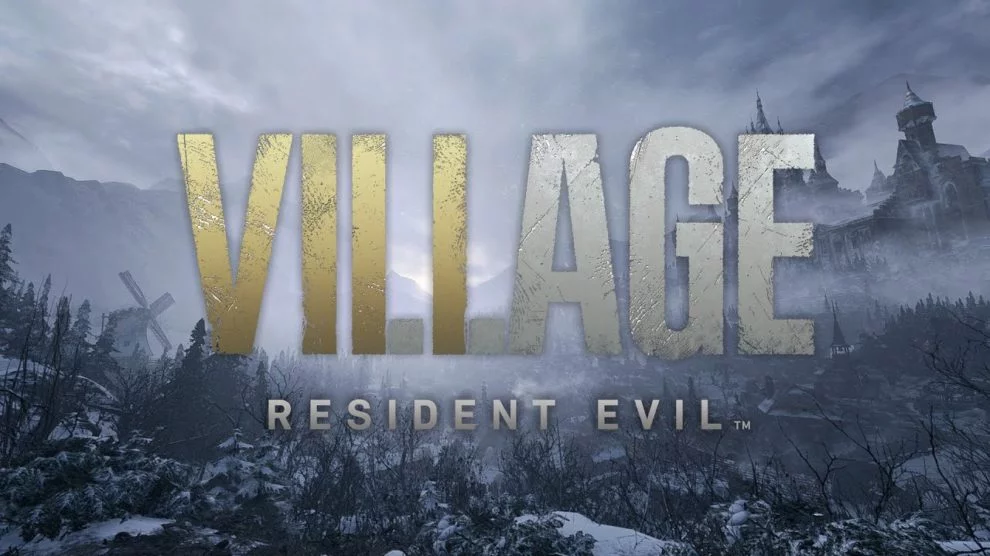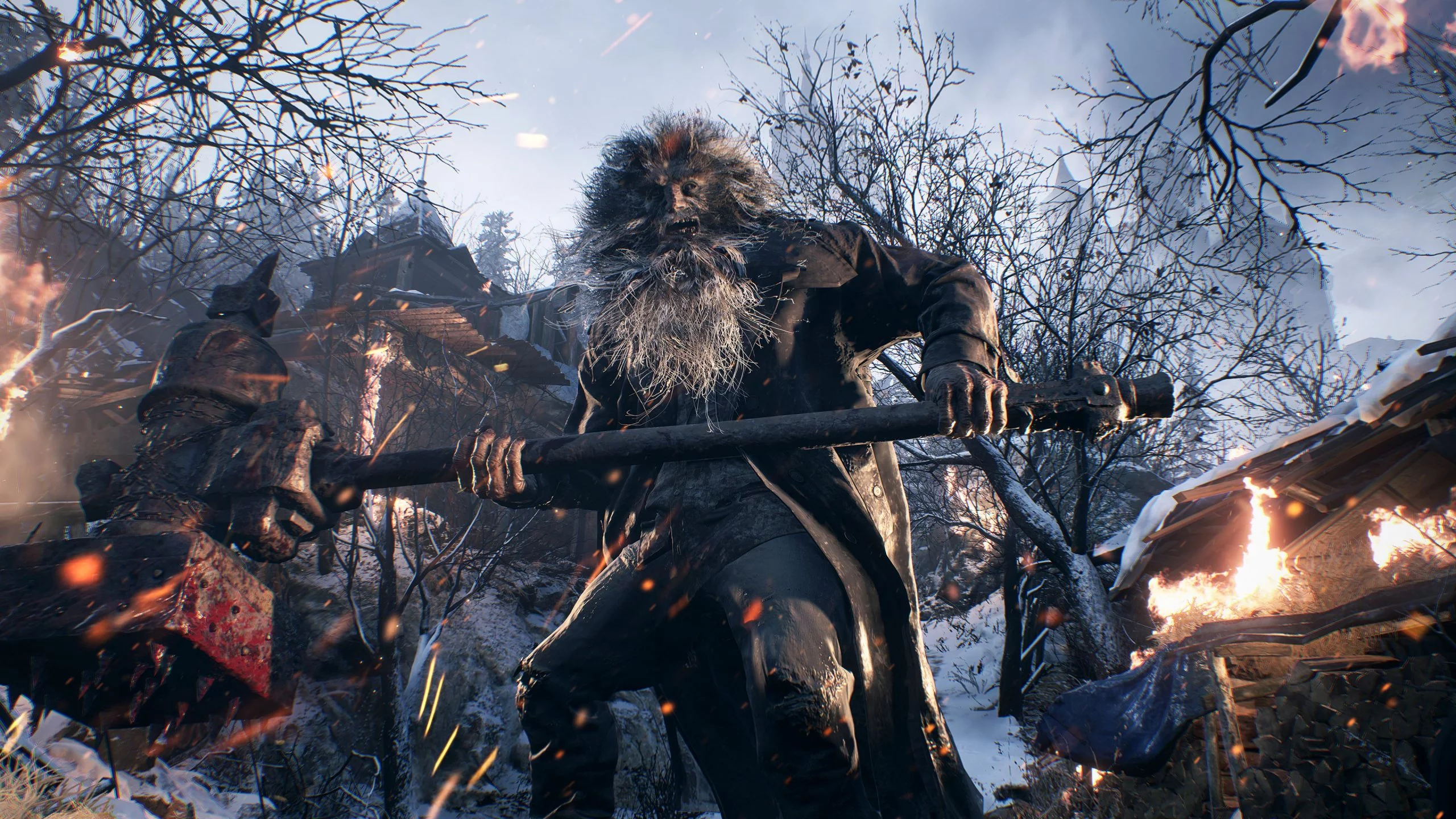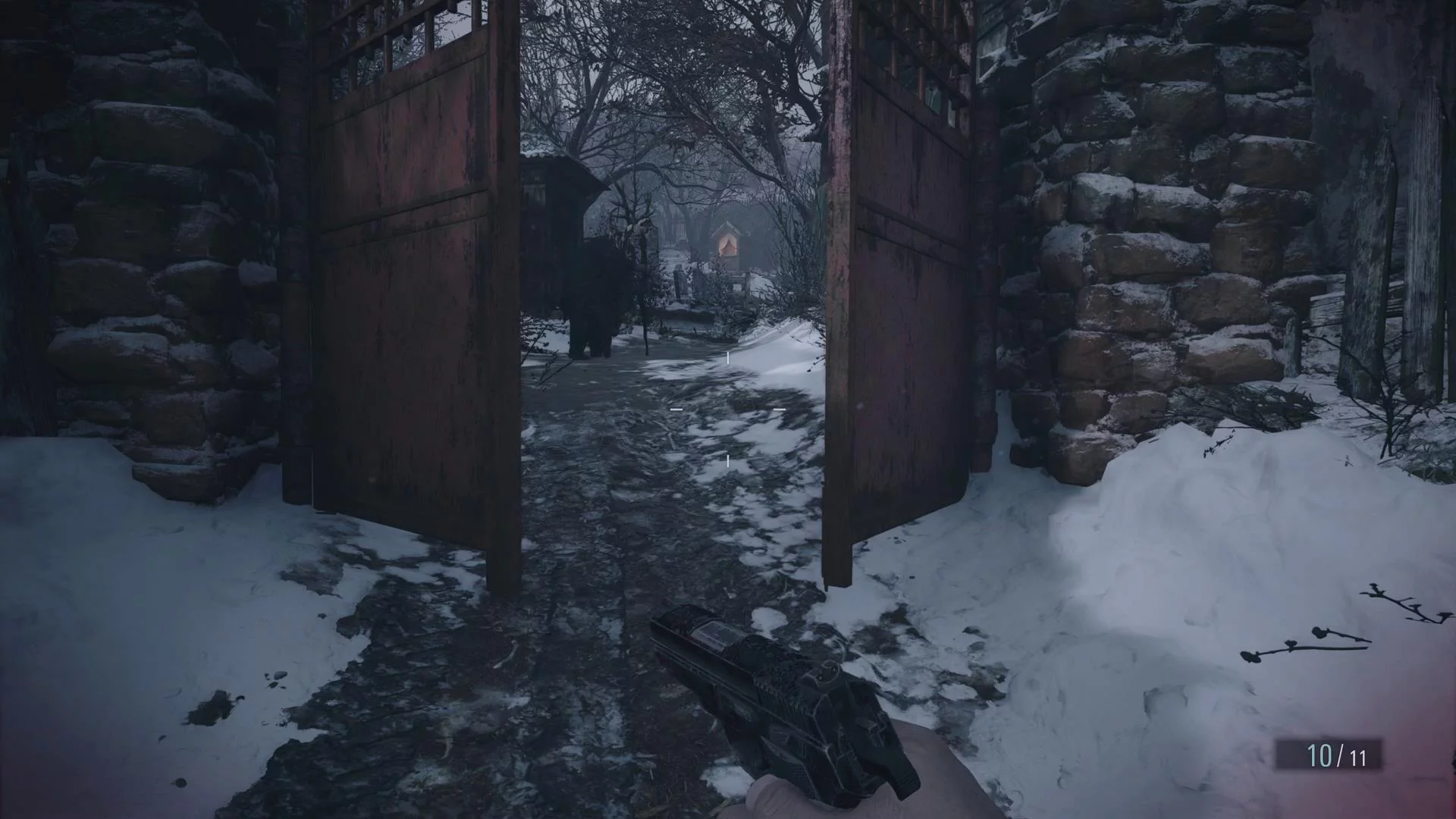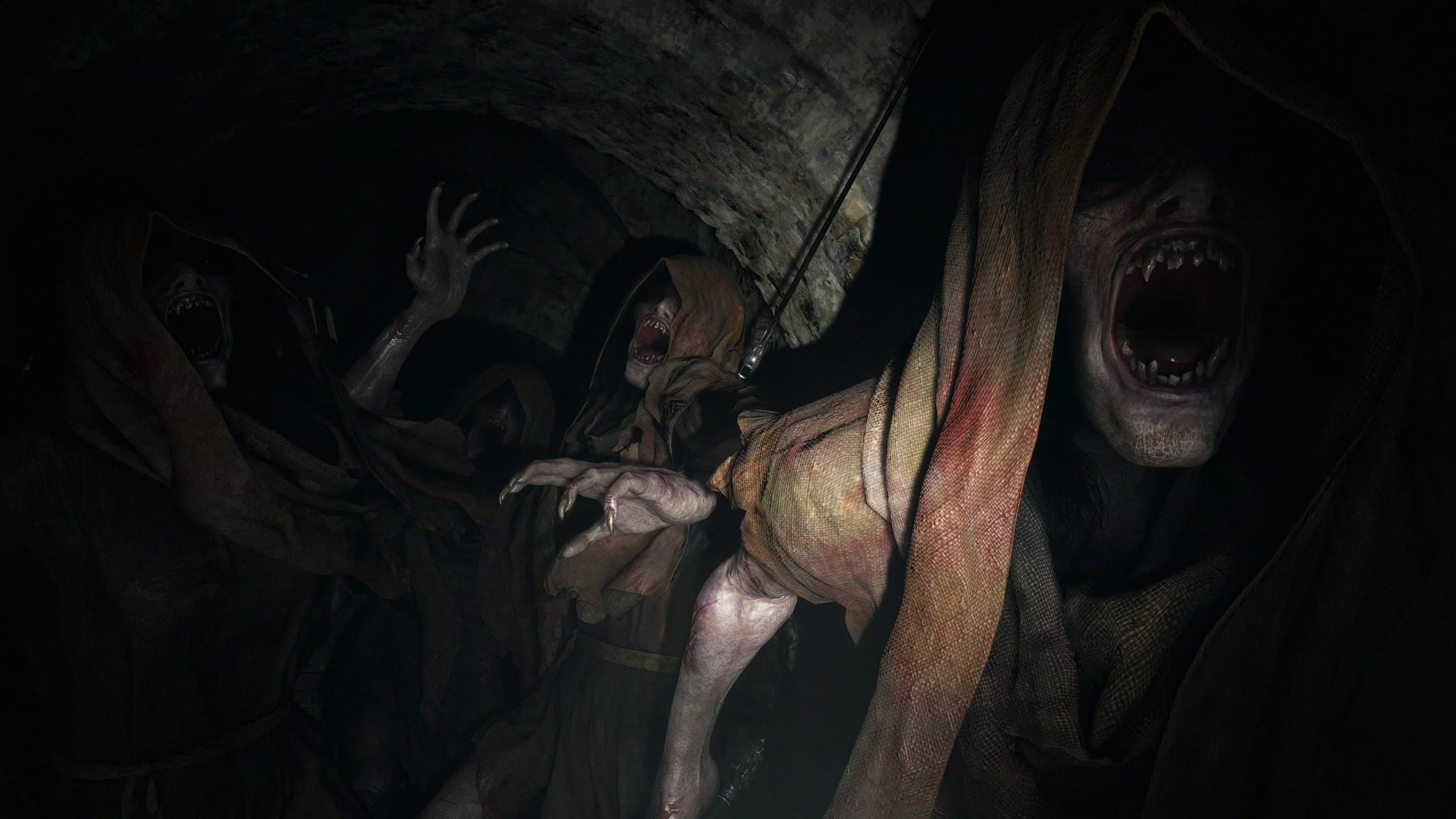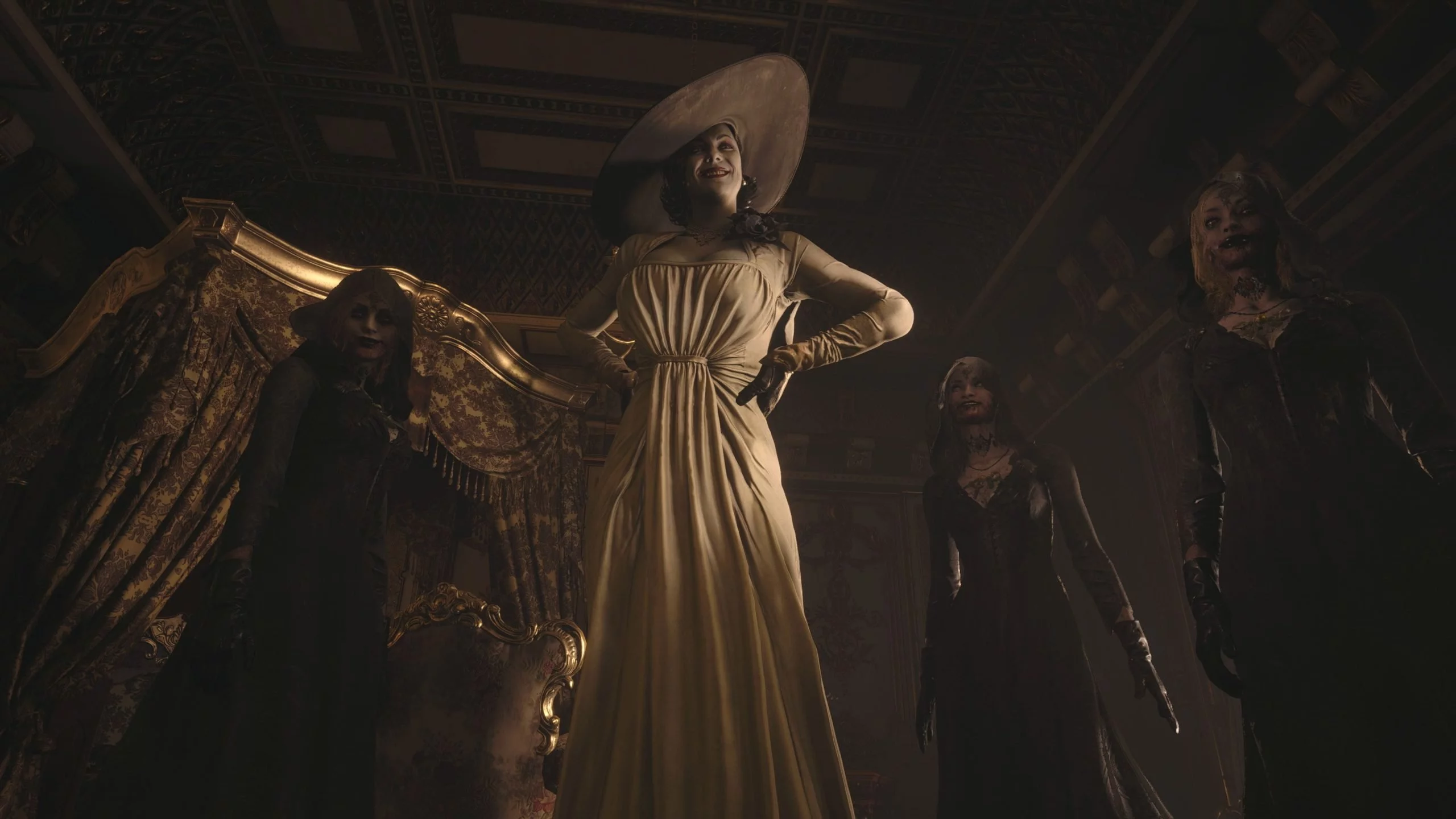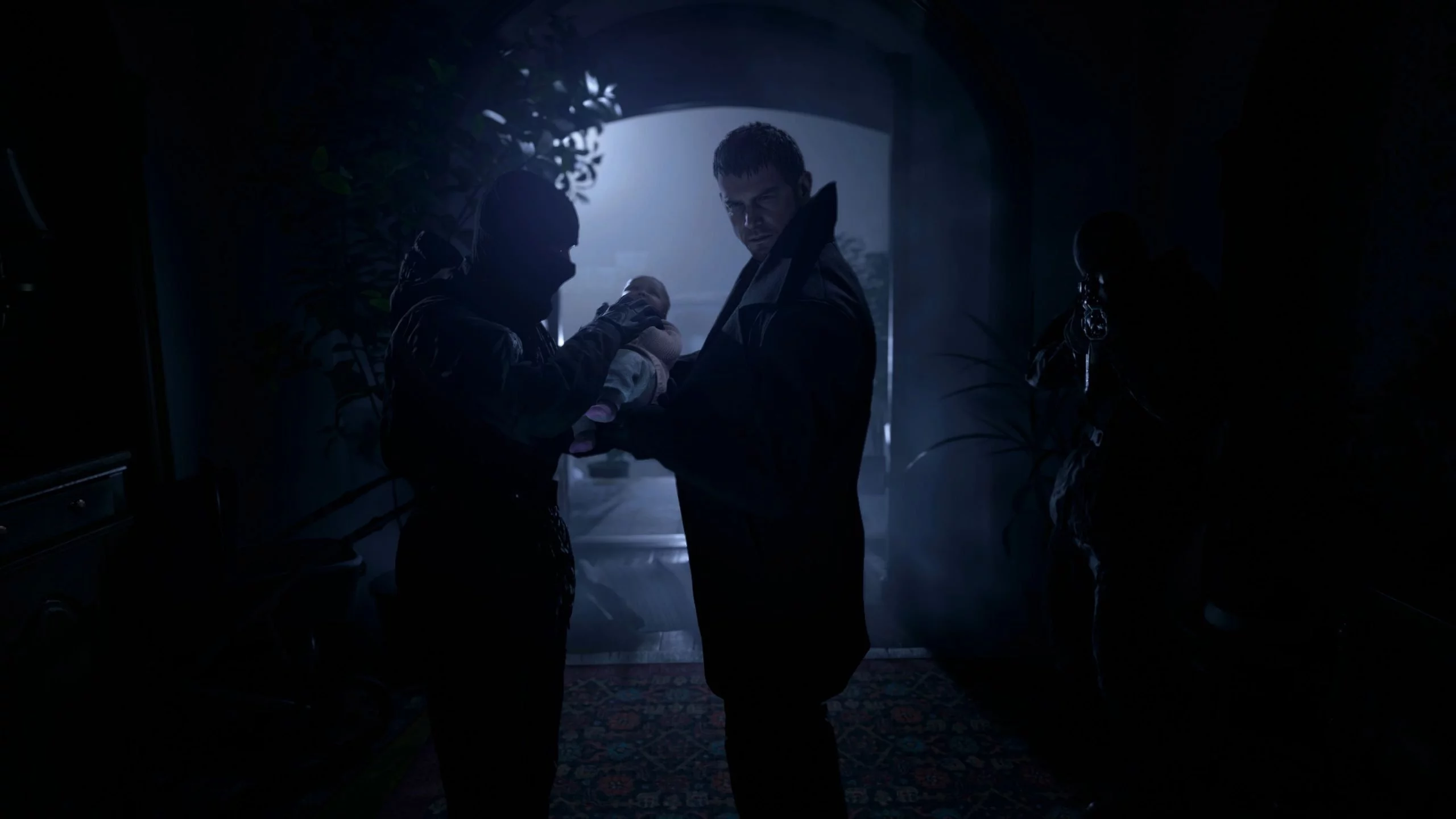The franchise's first-person foundation is beefed up in some areas but weakened in many more.
The Resident Evil series took an interesting turn with Resident Evil 7, moving the renowned survival horror franchise into a first-person perspective. For me, this risky move paid off. It provided players with a front seat to the horror show, resulting in a terrific ride… despite going off the rails in its third act.
Resident Evil Village (or Resident Evil VIIIage?) builds from that same foundation. While there are few areas of improvement that evolve the franchise in a positive direction, there are a much larger number of bewildering decisions that ultimately end up hampering it from being a great game.
The village
It’s been three years since Ethan Winters went looking for his missing wife, Mia. This led him to the strange encounter at the Baker House in Resident Evil 7, where things got ridiculously crazy. If you want to refresh your memory on that story, or even if you missed out on that game, Resident Evil Village comes with a nice recap video to bring you up to speed. Under the protection of series’ veteran Chris Redfield, Ethan and Mia are now living in Europe with their newborn daughter Rose. Out of the blue one evening, Chris barges into the house with an armed combat team and kills Mia as she is preparing dinner. Without explanation, Ethan and Rose are taken away.
Ethan awakes in a daze on the side of the road, nearby the overturned vehicle that was once transporting him. With a cacaphony of weird noises surrounding him in the dead of night, he stumbles through the snow to find himself in an old and rundown (and titular) village, which serves as your central hub. As Ethan begins rifling through abandoned houses to collect supplies, he locates his first weapon and quickly discovers that this is no ordinary place. He’s soon ambushed by werewolf-like creatures and attempts to slow them down by running from from house to house, barricading doors as he barrels through them. While these werewolves — lycans, in fact — beat on the exteriors of the walls, you are able to shoot them through gaps in the aging houses’ wooden foundations.
Ethan leaves the relative safety of a house to find a number of the classic video game trope, exploding red barrels that can be weaponised and destroyed, waiting for him; for us, rather, as I’m feeling very immersed and absorbed by this point. Using what I know so far, I find myself frantically running around, trying to both defend myself and fight off the enemies. To top things off, I’m pounced by a hulking, hammer-wielding beast of a thing. I scramble away from this new enemy and continue on, blocking off doors, climbing ladders, crawling under floor spaces, and killing lycan after lycan. They just do not seem to stop coming at me.
I die, barricaded inside a house.
The same scenario plays itself out as I load back in. I die again, and again, and again. I’m fairly confused at this point as to what I should be doing. When I’m running around outside there doesn’t appear to be anything giving me a hint as to what my task is, and despite being as effective as I can, I keep running out of resources to keep me alive.
During my next attempt, I run into a bug. Strangely as I am close to dying — aren’t I always? — I’m warped to an area outside near where all the action has taken place. It’s completely silent. All of the lycans have vanished, and there’s an open red gate with a mysterious NPC beyond it, beckoning me to go to her. It’s at this point I realise something has broken, and I’ve been moved forward in time. I have no idea how much of the game has just been skipped. When I try to reload my last checkpoint it puts me back in the middle of the village with no health; the gate is open and the NPC is there. I decide to restart my entire playthrough because I don’t know how much of the narrative I’ve been robbed of.
No trust
When I work my way back to this section, I again die attempting to figure out what I’m supposed to be doing. The next time though, something changes. As I am about to run out of health, I’m suddenly grabbed from behind and flung into the snow. The lycans surround my body and a cutscene plays out. When I regain control, the red gate is open and the mysterious NPC is once again standing there, waiting to be talked to. The good news is that I’m back to where I need to be and I now have the context for what is going on.
The bad news? At this point, during one of its first real encounters, Resident Evil Village had already lost my trust. As a player, I’d just been put into a situation that was basically unwinnable. The game wants you to lose — and in a very specific way — in order to trigger that cutscene. I was supposed to be outside to continue on, but instead I faltered, trying to survive by barricading doors and keeping my distance inside buildings.
The thing I couldn’t get out of my head is that Resident Evil is supposed to be a survival game. This thought plagued me as I continued on — how often would I be burning through precious resources like ammo or healing items, thinking I was doing the right thing, only to find those resources wasted because my true goal was to try to trigger a scripted event? This unfortunately happens a handful of times, and shouldn’t be the case in a title that relies so heavily on limited resources, scavenging and strategic planning.
Don’t step on me
As you begin to branch out into the dark corners of the village, you discover that its self-appointed leader has taken Rose. As part of your attempts to get her back, you’ll have to deal with the four lords the leader commands. One of those, of course, is Lady Dimitrescu: a tall vampire-like character with razor claws and creepy bug children who delighted the internet when she featured in Resident Evil Village’s trailers. After her strong marketing debut, most players will be disappointed in Lady Dimitrescu’s limited screen time and lacklustre storyline.
While pacing the halls of Castle Dimitrescu, its Lady is supposed to be an overbearing presence that stalks you while you complete puzzles and explore the castle. Instead, she’s largely relegated to a hallway or two where you can clearly see the path she is walking up and down. Lady Dimitrescu is so fixated on strolling her programmed line that you can just run into a nearby save room room at one point and, with the door wide open, watch on as she simply stands nearby. After a few moments the towering woman will completely forget you are there and slowly continue back along her predetermined path.
The Lady’s failings break any sense of immersion; you can see the cogs turning. Instead of being a menacing presence, Lady Dimitrescu quickly becomes an easily avoidable non-issue, and each of her children sadly suffer the same fate. While the remaining lords have their own gimmicks, they all largely fall flat. Unless you consider being really tall a personality trait, none of Village‘s antagonists have any real substance, especially when compared to the fleshed-out and unnervingly creepy Baker clan of Resident Evil 7. I truly didn’t know the name of one lord until I’d already eliminated it.
Nevertheless, the detailed environments of Castle Dimitrescu are still wonderful to explore, and this is where Resident Evil Village shines. Slowly dealing with enemies and searching through rooms is incredibly fun and doesn’t lose its appeal as you branch out to other areas around the village, all while engaging with a range of characters along the journey. You will do a lot of backtracking, and thankfully the map marks off completed rooms when you’ve discovered everything that can be found within. It helps significantly so you’re not left pixel hunting for key items or scrounging for pieces of ammo left lying around.
Over on the PlayStation 5, Resident Evil Village is visually impressive, showcasing its ray tracing technology while running at a reported 45-60 frames per second. For the most part the frame rate holds up, but there are certain sections where it drops a lot; even quite significantly in one location. Thankfully, this area is mostly puzzle-based and doesn’t involve any significant combat.
Just stop and talk
The mix of combat and puzzle solving is paced very well for the most part, but much like Resident Evil 7, things fall apart in the third act. There are sections where the horror aspect completely disappears, replaced instead by an action arena shooter; there’s even one segment that could be mistaken for a level straight out of Call of Duty. These moments are so jarringly disconnected from the rest of the experience that it feels tacked on just to appeal to a certain audience.
As the story concludes, your best bet is not to think too hard about the 10 hours it has taken to complete it. If you do, you’ll quickly realise that there are plot holes and nonsensical narrative decisions that just do not add up by the time Village’s end credits roll. So many loose ends could have been resolved if the characters just stopped and took a few seconds to talk to one another; Capcom even points this out itself near the end, as if that somehow sorts the problem.
After the completion of Resident Evil Village’s campaign, a additional mode called The Mercenaries unlocks. As in previous iterations of the franchise, you’re tasked with battling through several levels fighting enemies, collecting powerups and chaining combos to set a high score. You can spend points that you receive to unlock upgrades in both this mode and in the main campaign. There is also some extra replay value offered by going back into the story with the bonus unlocks you’ve acquired, and using a new game plus system to continue upgrading weapons and completing extra challenges.
Resident Evil Village is an enjoyable horror experience that embraces the franchise’s first-person approach and refines a few of its mechanics along the way. It’s ultimately held back by a sloppy storyline, two-dimensional characters and bizarre design choices. The relationship between it and the player is broken from the get-go, resulting in loss of trust that can sit in the back of your mind and haunt you through your entire playthrough.
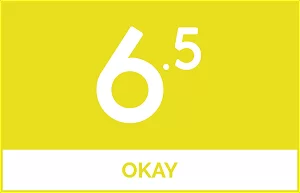 |
|
The good
|
The bad
|
Resident Evil Village was reviewed using a promotional code on PS5, as provided by the publisher. Click here to learn more about Stevivor’s scoring scale.
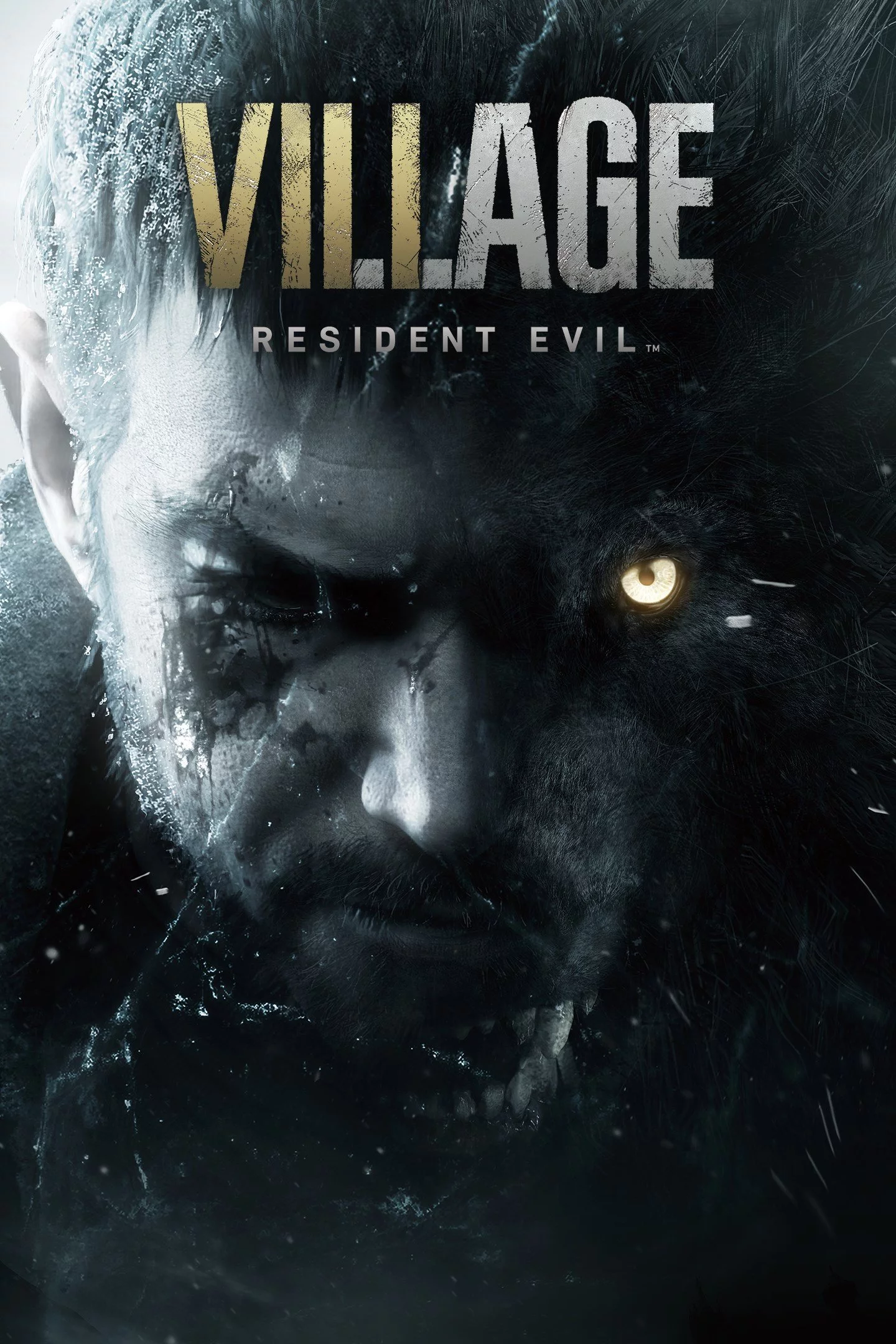 |
Resident Evil Village7 May 2021PC PS4 PS5 Xbox One Xbox Series S & X
|
This article may contain affiliate links, meaning we could earn a small commission if you click-through and make a purchase. Stevivor is an independent outlet and our journalism is in no way influenced by any advertiser or commercial initiative.





